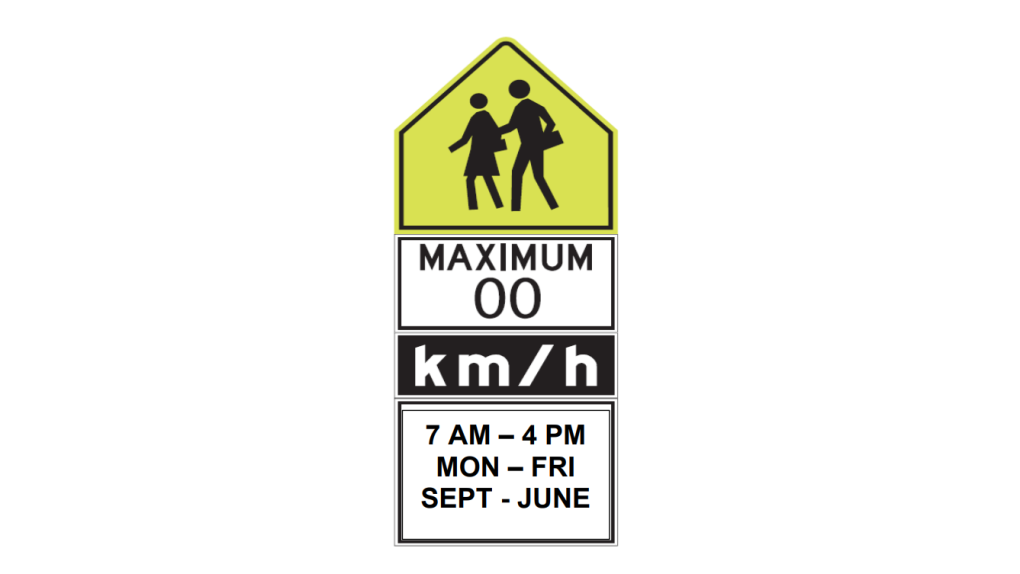Reducing speed limits in school zones along major roads a shift from previous traffic safety strategy
 A school crossing sign along a busy street in London. (Daryl Newcombe/CTV News London)
A school crossing sign along a busy street in London. (Daryl Newcombe/CTV News London)
A proposal to reduce speed limits within school zones along major roads would fill a safety gap left by a council decision eight years ago.
On Tuesday, the Civic Works Committee (CWC) discussed a staff recommendation to drop speed limits by 10 km/h in 30 school zones located on arterial roads within London.
“Ongoing collision monitoring reinforces the need to improve pedestrian safety,” the staff report reads. “Research supports the effectiveness of lower speed limits in decreasing traffic incidents.”
The reduced speed limits would only be enacted during school hours, 7 a.m. to 4 p.m. Monday to Friday between Sept. 1 and June 30.
Most of the school zones would go down to 40 km/h, but faster sections of Highbury Avenue, Oxford West, and Wellington South would be reduced to 50 km/h and 60 km/h.
"There's still, some very, very high numbers there. And is there anything we can do to bring that down or could we consider phasing it down over a period of time?” asked Coun. Sam Trosow. “It's just seems like a really fast speed for people to be going past schools."
 Sample speed sign for impacted school zones. (Source: Supplied)
Sample speed sign for impacted school zones. (Source: Supplied)
"A speed limit, lowering of 20 km/h or more also incurs the requirement, based on the Highway Traffic Act, to post advanced warning signs,” explained Director of Transportation and Mobility Doug MacRae. “That would be an additional sign requirement."
In 2016, London began reducing speed limits to 40 km/h just around schools within residential neighbourhoods.
At the time, a staff report warned against lowering speed limits at schools on arterial roads, “The road classification along with the roadside environment greatly influences the speed that drivers will travel. It is likely that implementation of School Zone Speed Limits on arterial roads would have little or no impact on the speed of vehicles due to the driver environment on these roads.”
Eight years ago, council was also told that 24/7 application would simplify enforcement and, “Recognizes that schools are often used by vulnerable road users outside of traditional school hours.”
 A school crossing sign along a busy street in London. (Daryl Newcombe/CTV News London)
A school crossing sign along a busy street in London. (Daryl Newcombe/CTV News London)
According to MacRae, the new proposal reflects changes in traffic safety policies, “The proposed approach in this report [in 2024] is to go towards the hours that schools are typically operating. It has a better fit with the Highway Traffic Act and better enforceability from what we're hearing from London police.”
He added that Automated Speed Enforcement (ASE) photo radar units are now permitted in school zones to encourage compliance.
Installing 250 signs to create the new school speed zones would cost $30,000.
The reduced speed limits would roll out gradually this fall and be completed by the end of this year.
Members of CWC unanimously supported changing the speed limits.
Council will make a final decision July 23.
CTVNews.ca Top Stories

Quebec man, 81, gets prison sentence after admitting to killing wife with Alzheimer's disease
An 81-year-old Quebec man has been sentenced to prison after admitting to killing his wife with Alzheimer's disease.
Canada Post quarterly loss tops $300M as strike hits second week -- and rivals step in
Canada Post saw hundreds of millions of dollars drain out of its coffers last quarter, due largely to its dwindling share of the parcels market, while an ongoing strike continues to batter its bottom line.
'Immoral depravity': Two men convicted in case of frozen migrant family in Manitoba
A jury has found two men guilty on human smuggling charges in a case where a family from India froze to death in Manitoba while trying to walk across the Canada-U.S. border.
Prime Minister Trudeau attends Taylor Swift's Eras Tour in Toronto with family
Prime Minister Justin Trudeau is a Swiftie. His office confirmed to CTV News Toronto that he and members of his family are attending the penultimate show of Taylor Swift's 'The Eras Tour' in Toronto on Friday evening.
Trump supporters review-bomb B.C. floral shop by accident
A small business owner from B.C.'s Fraser Valley is speaking out after being review-bombed by confused supporters of U.S. president-elect Donald Trump this week.
Pat King found guilty of mischief for role in 'Freedom Convoy'
Pat King, one of the most prominent figures of the 2022 'Freedom Convoy' in Ottawa, has been found guilty on five counts including mischief and disobeying a court order.
Nearly 46,000 electric vehicles recalled in Canada over power loss risk
Nearly 46,000 electric vehicles from Kia, Hyundai and Genesis are being recalled in Canada over a potential power loss issue that can increase the risk of a crash.
Trump chooses Bessent to be Treasury secretary and Vought as top budget official
President-elect Donald Trump announced Friday that he'll nominate hedge fund manager Scott Bessent, an advocate for deficit reduction, to serve as his next treasury secretary. Trump also said he would nominate Russel Vought to lead the Office of Management and Budget.
Canada's tax relief plan: Who gets a cheque?
The Canadian government has unveiled its plans for a sweeping GST/HST pause on select items during the holiday period. The day after the announcement, questions remain on how the whole thing will work.


































